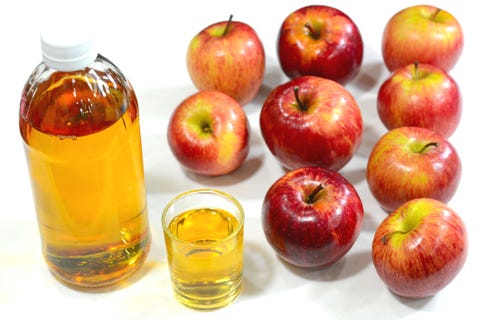Where Are All These Fruit Flies Coming From
Bugs are not something you want in your house—period. And fruit flies are especially unwanted houseguests. Sure, you can try to shoo them away, but to get rid of fruit flies for good, you'll need a smart, long-term solution. In many ways, getting rid of fruit flies is really no different than getting rid of ants, gnats, or other pesky pests. (But if you think it's as easy as putting out the best indoor mosquito traps to catch them, think again. Even those are no match for these tiny flies!)
🌻 Join the Country Club today and enjoy exclusive access to home tours, seasonal craft projects, recipes, and more!
First things first, you'll want to start with a good, old-fashioned cleaning. Fact: Fruit flies hate clean surfaces. But if you've cleaned countertops and scrubbed every surface and you're still seeing fruit flies, we've researched several effective ways to become fruit fly-free in no time, from all-natural remedies using vinegar and other household items to chemical sprays that will eliminate them for good.
This content is imported from {embed-name}. You may be able to find the same content in another format, or you may be able to find more information, at their web site.
Where do fruit flies come from? What causes fruit flies?
Even though it seems that they just pop up out of nowhere, the truth is fruit flies are attracted to fermenting fruits and vegetables and thrive on high-fructose substances. Female fruit flies lay their eggs on the surface of or inside overripe, rotting, or decaying fruit. If you think that's gross, brace yourself. Each female fruit fly can lay up to 500 eggs at a time! For that reason, it's important to take action as soon as you see the very first fruit fly. After hatching, the larva feast on their surroundings (for example, a super ripe banana) for a few days before evolving into fully formed adults. Overall, their life cycle is fairly quick—fruit flies are capable of mating just two days after they become adults—which means your cleanup clock starts immediately. Pronto. No waiting.
How do you get rid of fruit flies?
1. Clean all surfaces. The first (and perhaps easiest) step to eliminating fruit flies is quite simple: Thoroughly wipe down all countertops. Keep sink drains free of food particles and residue as best you can. If you don't, these spots become the perfect place for fruit flies to breed.
2. Throw out too-ripe or rotting produce. Check all fruits and vegetables for rot, decay, or overripeness. Dispose any questionable pieces to avoid female fruit flies from laying their eggs on these surfaces.

jayk7 Getty Images
3. Use apple cider vinegar. Fill a bowl or glass with apple cider vinegar, cover with plastic wrap, seal the edges with a rubber band, and poke tiny holes in the top. The vinegar will attract the fruit flies, and once they're inside, they won't be able to escape the plastic wrap barrier.
4. Mix apple cider vinegar and dish soap. Fill a bowl with vinegar and add a drop of dish soap, mixing well. The stale sweetness of the apple cider vinegar tempts flies, and the dish soap works to decrease the surface tension of the liquid, causing the flies to become immersed immediately upon investigating the solution and unable to escape.
5. Try beer or wine. Leave a bottle of old wine or beer out near where the fruit flies were spotted. They'll be lured in by the stale beverage, but the narrow neck of the bottle acts as a natural barrier to keep them trapped.
I want to try a chemical remedy. What spray will kill fruit flies?
6. Try a chemical fruit-fly spray. When cleaning and household remedies aren't working, buy one of these top-rated products to eliminate fruit flies once and for all.
What's the difference between fruit flies and gnats?
If you spot little black bugs flying around, the first thing you want to do is identify the bug. It's easy to confuse fruit flies and fungus gnats, a common lookalike. Gnats tend to be gray or black, while fruit flies range from light tan to reddish orange and brown. Fruit flies have a taste for too-ripe fruit and other produce and thrive on high-fructose substances. Fungus gnats, on the other hand, live in soils and on plants, so if you think you're spotting those, the issue may not be in your fruit bowl. Other bugs the culprit? Check out these links for helpful tips regarding how to get rid of gnats, how to get rid of carpenter ants, and how to get rid of flies in drains.
Natalie Schumann NATALIE SCHUMANN Associate Editor Natalie Schumann is the Associate Editor at Country Living, where she manages CL's social channels and covers country music and entertainment news.
This content is created and maintained by a third party, and imported onto this page to help users provide their email addresses. You may be able to find more information about this and similar content at piano.io
Where Are All These Fruit Flies Coming From
Source: https://www.countryliving.com/home-maintenance/cleaning/a27284947/how-to-get-rid-of-fruit-flies/
0 Response to "Where Are All These Fruit Flies Coming From"
Post a Comment